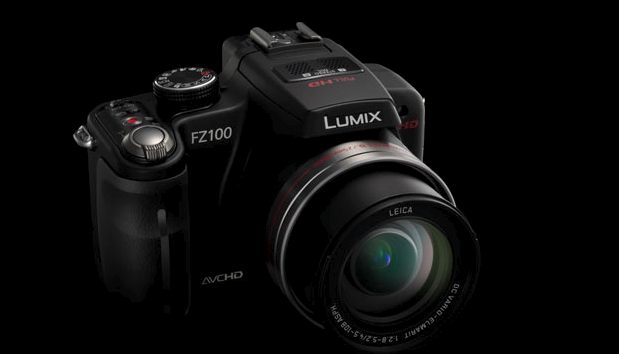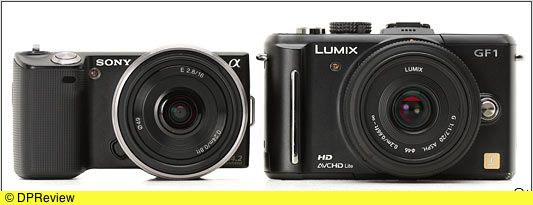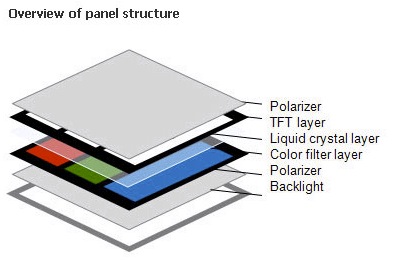A strange idea.
Let me preface my comments by saying that I have yet to handle the newly announced micro four-thirds Olympus E-PL1. Only journalists who will say nice things about it get advance copies and I am neither journalist nor toady.
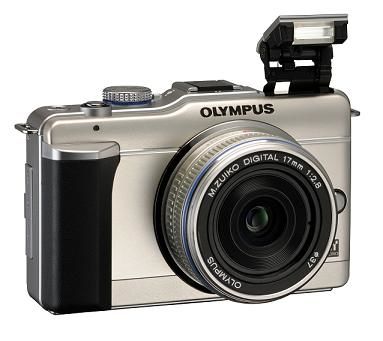
The Olympus E-PL1
The camera will likely retail for $500 compared to the $660 asked for the E-P1 and the outrageous $1,100 for the E-P2, even if the latter comes with a clunky clip on EVF. Cost savings are accomplished by dropping the turn wheel and replacing it with slower buttons, more use of plastics and mounting the kit lens in a plastic rather than a metal body. Conferring value added, the E-PL1 has a built in electronic flash, like the E-P2, whereas the E-P1 has none.
So for $160 less than the E-P1 you get more plastic in the body and lens and a flash gun. Not bad. As none of these cameras is intended for use in war zones, I see no problem with the use of plastics and for many the flash is worth having. Stated differently, Olympus has just cannibalized the E-P1 into obsolescence, especially when you realize that the E-PL1 accepts the clip-on EVF denied to E-P1 users. The lack of the thumb wheel for street snappers is no big deal – there’s no time to adjust anything in the urban jungle so it would not be missed by this user. And with any other subject you have all the time on earth to mess with the buttons.
The lens remains interchangeable and there’s still no built-in viewfinder. The clip-on EVF destroys the compactness concept of the design by adding bulk and weight. So, in summary, I see the E-PL1 as a replacement for the E-P1 at lower cost but still a very expensive point-and-shoot restricted by its adherence to an LCD screen for composition, with all the attendant problems those bring. I would guess that E-P1 users are none too happy about Oly’s confused marketing move here.
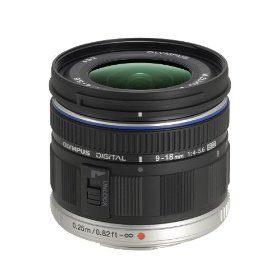
Olympus 9-18mm wide zoom
At the same time Olympus announced two micro four-thirds lenses of interest. One is a $600 9-18mm wide zoom (18-36mm full frame equivalent) which depends on the camera’s in body image stabilizer, meaning that Panasonic G1/GH1/GF1 users have no IS as those bodies depend on in-lens IS. No big deal with such a short and useful focal length range, and the price is more appealing than the $1,100 asked by Panny for its wider 7-14mm super-wide zoom.
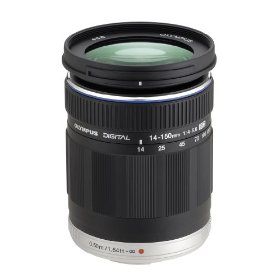
Olympus 14-150
The other newly announced Olympus zoom is the 14-150mm (28-300 FFE). At $525 it offers an appealing value but, once again, comes with a big negative. Without in-lens IS, use at the long end with the Panasonic bodies will require firm support to avoid shake. Olympus body owners benefit from in-body IS but have you ever tried to use an LCD for composition with long lenses, holding the camera two feet from your eyes like a real dork? Another dud, I’m afraid, especially for Panny micro four-thirds aficionados.
From a personal perspective with over 5,000 exposures on my G1, I remain delighted with the crackerjack 14-45mm kit lens (rough zoom ring apart) and find that I pocket the 45-200 IS for those few occasions where I need the reach. And what a reach it is at the long end! All I need to round things out is a pancake 10mm f/2.8 or so for really wide views and I will be a happy man. No sign of such a lens in Panny’s currently announced lens plans. There’s a 14mm f/2.8 coming but the very small kit zoom starts at 14mm and f/3.5 so I simply don’t understand Panny’s thinking here which seems about as clear as Oly’s mistake with the E-P1. The current 20mm Panny adds a fast aperture, true, but it duplicates what I have with the kit zoom and I do not need fast lenses for my kind of work.
